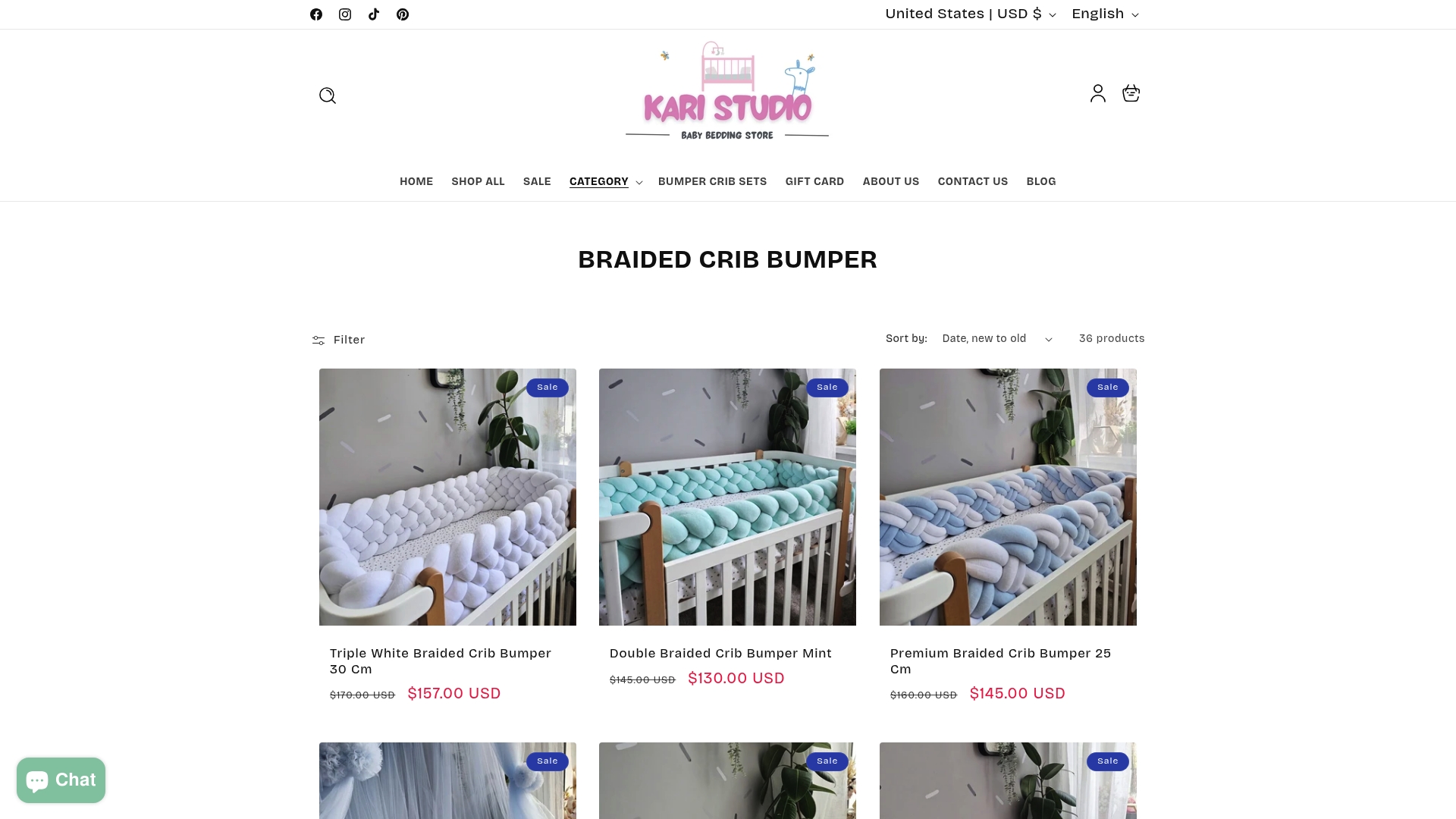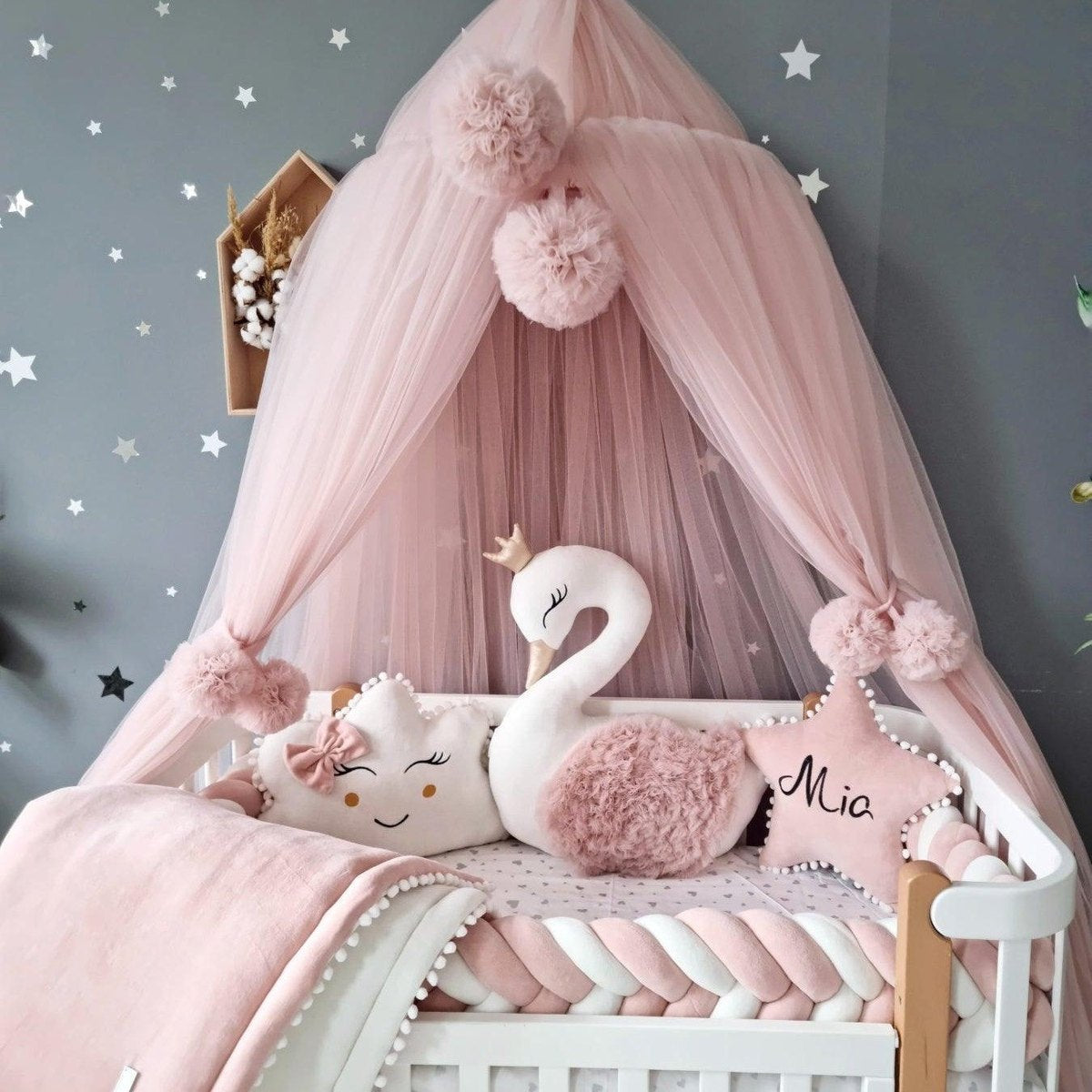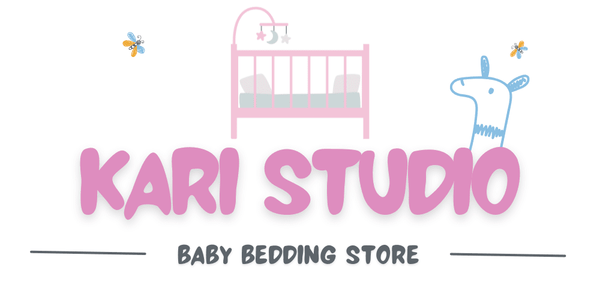Parents designing nurseries in 2025 are rewriting the rulebook by making choices that go way beyond looks. More families are turning to nursery furniture that transforms as your child grows, saving space and money over time. You might think color and style are all that matter when planning a baby’s room, but it turns out that how you choose materials, furniture, and themes can shape your child’s comfort, well-being, and even their view of the world.
Table of Contents
- Eco-Friendly Materials: Reduce Carbon Footprint
- Smart Technology: Enhancing Baby Monitoring
- Minimalist Design: Simplicity Meets Functionality
- Multifunctional Furniture: Space-Saving Solutions
- Gender-Neutral Decor: Embracing Inclusivity
- Nature-Inspired Themes: Bringing The Outdoors In
- Personalized Touches: Making It Unique
Quick Summary
| Takeaway | Explanation |
|---|---|
| Choose eco-friendly materials | Opt for sustainable materials like bamboo and organic cotton to reduce your nursery’s carbon footprint. |
| Incorporate smart monitoring technology | Use advanced monitoring devices to track your baby’s health and receive real-time alerts for safety. |
| Embrace minimalist design principles | Create a calming nursery with multipurpose furniture and neutral colors to promote tranquility and functionality. |
| Utilize multifunctional furniture | Invest in adaptable furniture that grows with your child’s needs, saving space and money over time. |
| Design inclusive, gender-neutral spaces | Select versatile decor that celebrates individual expression and avoids traditional stereotypes in color and imagery. |
1: Eco-Friendly Materials: Reduce Carbon Footprint
Parents navigating nursery design in 2025 are increasingly prioritizing sustainable and environmentally conscious materials. The shift towards eco-friendly nursery elements reflects a growing awareness of carbon footprint reduction and the long-term impact of consumer choices on our planet.
According to research in HortTechnology, alternative production methods can significantly reduce environmental impact. The nursery industry is experiencing a transformative period where sustainability is no longer optional but essential.
Key eco-friendly material considerations include:
- Renewable resources: Bamboo, organic cotton, and recycled wood
- Low-emission manufacturing processes
- Biodegradable product components
Modern parents recognize that choosing sustainable nursery materials goes beyond aesthetic preferences. These choices directly contribute to reducing overall carbon emissions and supporting responsible manufacturing practices. Materials like organic cotton, which requires less water and eliminates harmful pesticides, are becoming standard rather than exceptional.
For parents interested in creating an environmentally responsible nursery, consider our guide on eco-friendly braided crib bumpers that balance safety, comfort, and sustainability. By selecting materials that minimize environmental impact, you’re not just designing a nursery – you’re making a statement about global responsibility and future generations.
2: Smart Technology: Enhancing Baby Monitoring
The nursery of 2025 is transforming with cutting-edge technological innovations that provide parents unprecedented insights into their infant’s well-being. Smart monitoring technology has evolved from simple audio devices to sophisticated systems capable of tracking multiple physiological parameters in real time.
According to research from Boise State University, advanced infant monitoring systems now integrate multiple non-invasive sensors to detect critical health indicators such as:
- Respiration patterns
- Body movement
- Ambient temperature
- Sleep positioning
- Sound levels
These intelligent systems offer continuous remote monitoring, allowing parents to track their baby’s health metrics through smartphone applications. The technology provides instant alerts for potential issues like irregular breathing, unexpected movement, or environmental changes that might disturb the infant’s rest.
Modern smart monitoring devices go beyond traditional safety measures. They leverage artificial intelligence and machine learning algorithms to provide predictive insights into an infant’s health and comfort. For parents wanting to understand more about integrating technology safely in their nursery, learn about crib mobile safety and how smart devices can complement traditional nursery elements.
Parents in 2025 can expect increasingly sophisticated monitoring solutions that balance technological advancement with user-friendly interfaces, ensuring peace of mind without overwhelming complexity. The future of baby monitoring is not just about surveillance but about creating a responsive, intelligent environment that supports infant health and parental confidence.
3: Minimalist Design: Simplicity Meets Functionality
The nursery design landscape of 2025 embraces minimalism as more than an aesthetic choice - it represents a strategic approach to creating functional, calming spaces for infants and parents. Modern parents are moving away from cluttered, overstimulating environments toward clean, purposeful design solutions that prioritize both visual tranquility and practical utility.
The minimalist nursery philosophy centers on selecting multi-purpose furniture and creating serene environments that support infant development and parental well-being. This approach reduces visual noise and promotes a sense of calm that benefits both child and caregiver.
Key minimalist design principles include:
- Neutral color palettes
- Multipurpose furniture pieces
- Streamlined storage solutions
- Limited decorative elements
According to research from the University of Minnesota Extension, design trends are increasingly emphasizing naturalistic approaches that integrate simplicity and functionality. In nursery design, this translates to thoughtful selections that serve multiple purposes while maintaining aesthetic elegance.
Parents seeking practical guidance can explore our comprehensive minimalist nursery design tips to transform their space. The goal is creating an environment that feels spacious, uncluttered, and intentionally designed to support an infant’s sensory development.
Minimalist nurseries in 2025 are not about creating sterile spaces, but about curating meaningful, functional environments that grow and adapt with the child. Each design element is carefully selected to provide maximum utility with minimal visual complexity, reflecting a sophisticated understanding of infant needs and contemporary design principles.
4: Multifunctional Furniture: Space-Saving Solutions
In 2025, nursery design is revolutionizing how parents approach spatial constraints through innovative multifunctional furniture that adapts seamlessly to changing family needs. Modern parents are prioritizing smart, transformative furniture pieces that maximize utility without compromising aesthetic appeal.
According to research published in the International Journal of Environmental Research and Public Health, adaptable home environments significantly support family well-being by providing flexible living solutions that grow with household dynamics.
Multifunctional furniture offers several critical advantages for contemporary nurseries:
- Convertible cribs that transform into toddler beds
- Changing tables with integrated storage
- Modular shelving systems
- Compact seating with hidden storage compartments
Innovative design solutions are reshaping how parents conceptualize nursery spaces. These multifunctional pieces not only save physical space but also represent a financially intelligent approach to infant room design. Furniture that seamlessly transitions between stages eliminates the need for frequent replacements, reducing both economic and environmental costs.
Parents seeking inspiration can explore creative approaches to maximizing nursery functionality. Strategic furniture selection allows families to create dynamic spaces that accommodate rapid childhood development stages while maintaining a clean, organized environment.
The most effective multifunctional furniture pieces in 2025 will prioritize seamless transformability, aesthetic simplicity, and long-term usability. By investing in adaptable furniture, parents can create nurturing spaces that evolve alongside their children’s changing needs.
5: Gender-Neutral Decor: Embracing Inclusivity
Nursery design in 2025 is experiencing a profound shift towards inclusive, identity-affirming spaces that challenge traditional color and theme stereotypes. Gender-neutral decor has evolved from a trend to a meaningful approach that supports children’s holistic development and self-expression.
According to research published in PubMed, gender-neutral environments can significantly reduce gender stereotyping and encourage more diverse social interactions among children.
Key principles of gender-neutral nursery design include:
- Soft, versatile color palettes
- Natural material selections
- Minimal gendered imagery
- Adaptable decorative elements
Modern parents recognize that gender-neutral spaces are not about removing gender identity, but about creating environments that welcome and celebrate individual uniqueness. These designs prioritize comfort, creativity, and personal expression over restrictive traditional norms.
For parents looking to explore thoughtful design options, our guide on creating versatile nursery decor offers practical insights into developing inclusive spaces. The goal is crafting nurseries that feel welcoming, nurturing, and reflective of each child’s emerging personality.
Ultimately, gender-neutral nursery design represents more than an aesthetic choice - it’s a profound statement about respecting individual potential and creating supportive environments where children can explore, learn, and grow without predetermined limitations.
6: Nature-Inspired Themes: Bringing the Outdoors In
Nursery design in 2025 is embracing biophilic principles that connect indoor spaces with natural environments, transforming traditional room concepts into immersive, calming landscapes that support infant development and parental well-being.
According to research examining children’s environmental interactions, nature-inspired design elements can significantly reduce stress and enhance cognitive performance for young children.
Key nature-inspired design strategies include:
- Soft earth-tone color palettes
- Organic material textures
- Natural landscape wall murals
- Botanical print accessories
Sustainable materials and organic design elements are becoming central to creating nurturing spaces that feel connected to the natural world. Designers are moving beyond superficial nature themes to integrate genuine ecological consciousness into nursery environments.
Parents interested in exploring creative approaches can discover DIY nursery decor ideas that incorporate natural elements seamlessly. The goal is creating spaces that feel both aesthetically pleasing and developmentally supportive.
These nature-inspired themes go far beyond decoration - they represent a holistic approach to early childhood environments that prioritizes sensory engagement and emotional connection with the natural world. By bringing outdoor elements inside, parents can create spaces that feel simultaneously calming, stimulating, and deeply nurturing.
7: Personalized Touches: Making It Unique
Nursery design in 2025 is shifting dramatically towards deeply personal spaces that reflect individual family narratives and infant identities. Customization has become more than a design choice - it represents a profound emotional connection between parents, children, and their living environments.
According to research published in the Journal of Perinatology, human-centered design strategies emphasize the critical importance of creating environments that feel uniquely tailored to individual needs.
Strategies for personalization include:
- Custom name artwork
- Family heritage elements
- Meaningful cultural symbols
- Handcrafted decorative pieces
Modern parents are moving beyond generic nursery designs, seeking ways to infuse spaces with meaningful personal narratives. These personalized touches might include family photographs, inherited heirlooms, or culturally significant decorative elements that tell a specific family story.
Parents interested in exploring unique design options can discover personalized nursery accessory ideas that transform standard nursery spaces into extraordinary, memory-rich environments.
The ultimate goal of personalization is creating a nursery that feels intimately connected to the child’s emerging identity - a space that will become a cherished backdrop to early childhood memories, reflecting love, heritage, and individual potential.
Below is a comprehensive table summarizing the seven key nursery trends for 2025, offering parents an at-a-glance overview of each trend and its primary benefits.
| Trend | Description | Key Benefits |
|---|---|---|
| Eco-Friendly Materials | Use of sustainable materials like bamboo, organic cotton, and recycled wood. | Reduces carbon footprint; supports responsible manufacturing. |
| Smart Technology | Integration of advanced monitoring devices and real-time alerts for a baby's well-being. | Enhanced safety; continuous health tracking for peace of mind. |
| Minimalist Design | Embracing clean lines, neutral palettes, and purposeful, multi-functional furniture. | Promotes calm; maximizes functionality and reduces clutter. |
| Multifunctional Furniture | Furniture pieces that transform or adapt as a child grows, such as convertible cribs. | Saves space and money; grows with child's needs. |
| Gender-Neutral Decor | Versatile color schemes and decor avoiding traditional gender stereotypes. | Encourages inclusivity and personal expression. |
| Nature-Inspired Themes | Designs and materials inspired by the natural world, such as earth tones and botanical prints. | Supports cognitive and emotional development; calms stress. |
| Personalized Touches | Custom artwork, family heritage elements, and unique decor reflecting personal stories. | Fosters emotional connection and sense of identity. |
Discover Trend-Forward Nursery Essentials with Kari Studio
Are you struggling to balance eco-friendly materials, smart nursery solutions, and a minimalist style while keeping your baby’s space safe and comfortable? Our curated collection at Kari Studio’s braided crib bumpers helps you overcome the challenges highlighted in the latest nursery trends article. Each piece is designed with sustainability, functionality, and inclusivity in mind so you can achieve a beautiful, customized look without compromise. Parents aiming for a clutter-free environment will love the versatile options available in our Handmade Cot Bumper Sets for Girls and those looking for extra comfort can explore our Handmade Baby Nests for a Crib.

Take the next step in designing a modern and thoughtful nursery that reflects 2025 trends. Shop the latest styles at Kari Studio’s braided crib bumpers today, and create a safe, stylish space that grows with your child. Make a difference in your baby’s comfort and safety now by choosing quality you can trust.
Frequently Asked Questions
What eco-friendly materials should I consider for my baby’s nursery?
When designing an eco-friendly nursery, consider renewable resources such as bamboo, organic cotton, and recycled wood. Additionally, focus on low-emission manufacturing processes and biodegradable components to minimize your nursery’s carbon footprint.
How can smart technology enhance baby monitoring in 2025?
Smart monitoring technology in 2025 provides advanced insights into an infant’s well-being by tracking critical health indicators like respiration patterns, body movement, and sleep positioning, often integrated with smartphone applications for continuous monitoring and instant alerts.
What are the benefits of minimalist design in a nursery?
Minimalist design promotes simplicity and functionality by reducing clutter and visual noise. It emphasizes multi-purpose furniture, neutral color palettes, and streamlined storage, which can help create a calming environment for both infants and parents.
Why is gender-neutral decor important in nursery design?
Gender-neutral decor supports inclusivity and individual expression by moving away from traditional color stereotypes. It fosters a welcoming environment that encourages diverse social interactions and personal growth, allowing children to explore their identities without restrictive norms.

